Despite the reputation, it's better, more practical transit than you might think.
Credit: Aurich Lawson | Getty Images
America has a motorcycle problem. Whereas the rest of the world views two-wheeled motorized transportation as transportation, the US sees motorcycles and scooters as toys. They're not something you use to commute to work or run errands. Instead, they're for riding to the coffee shop on weekends. This is a flawed line of thinking, and I'll tell you why, using two motorcycles as examples.
But first, hear me out. I live in Los Angeles, which is famous for its hellacious traffic. For motorcyclists, it's also famous because you get the ability to legally split lanes (i.e., ride between cars on the lane-dividing lines) and filter (i.e., ride between vehicles at a stoplight to get to the front), as well as its consistently gorgeous climate with a 365-day riding season. These factors aren't the case in every major city, but many of the benefits of motorcycling still apply elsewhere with the right gear and a can-do attitude.
The Italian
First, the 2025 Ducati Monster SP. This Italian beauty seemingly has everything you'd want in a fun motorcycle. It's lightweight, at just 412 lbs (187 kg) fueled. It's powerful, with a 937cc L-twin that produces 111 hp (83 kW) and 69 ft-lb (94 Nm) of torque. It features an upright and comfortable riding position, along with very good suspension and brakes courtesy of Ohlins and Brembo, respectively.
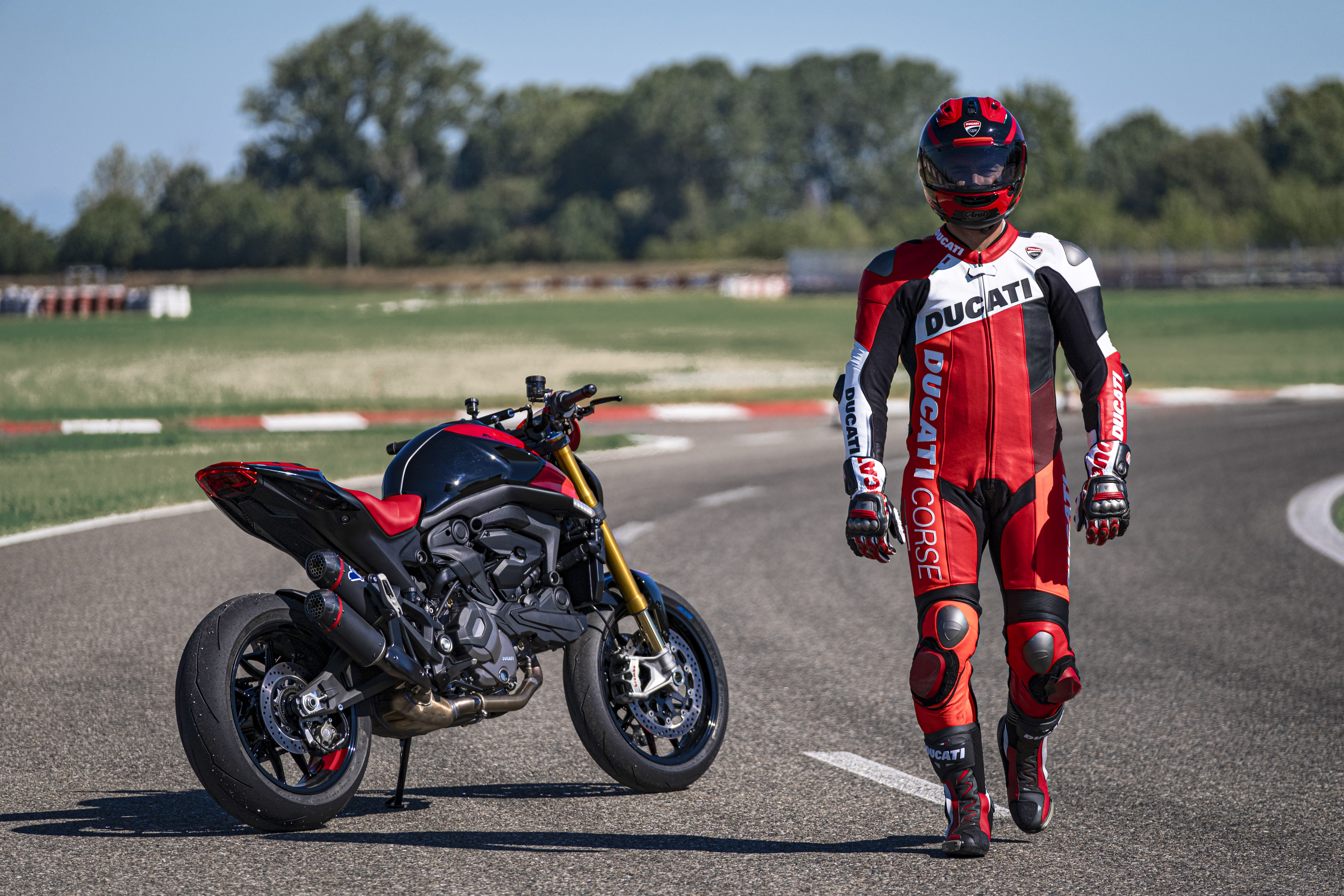
A Ducati Monster probably shouldn't be your first bike, but it's not that scary. Credit: Ducati
To folks who ride motorcycles, these figures indicate one hell of a good time, but those who don't ride might just see a very fast Italian suicide machine. Luckily, the Ducati is very well-equipped from a safety standpoint, with an incredibly robust suite of electronic rider aids, including lean-sensitive anti-lock brakes and traction control. It also has wheelie control and user-selectable ride modes that reduce throttle sensitivity and limit power output. All of this comes together in a very narrow profile to make the Monster an absolute weapon of a commuter.
The bike somehow manages to be sharp-handling and nimble while also being forgiving of ham-fisted rider inputs. It's not a great first bike for most people, but once you have a little experience, it's a phenomenal everyday rider.
The base Monster starts at $13,195, while the Monster SP I tested starts at $16,595. The base Monster is excellent and still features the great rider aids, but it lacks the loud exhaust and fancy suspension.
The Canadian
The 2025 Can-Am Pulse differs from the Ducati in many ways, with the biggest difference being that it's electric. Yes, electric motorcycles are a thing, and the Can-Am is interesting in this regard because our friends in the great white North are using a new electric drivetrain from Austrian manufacturer Rotax.
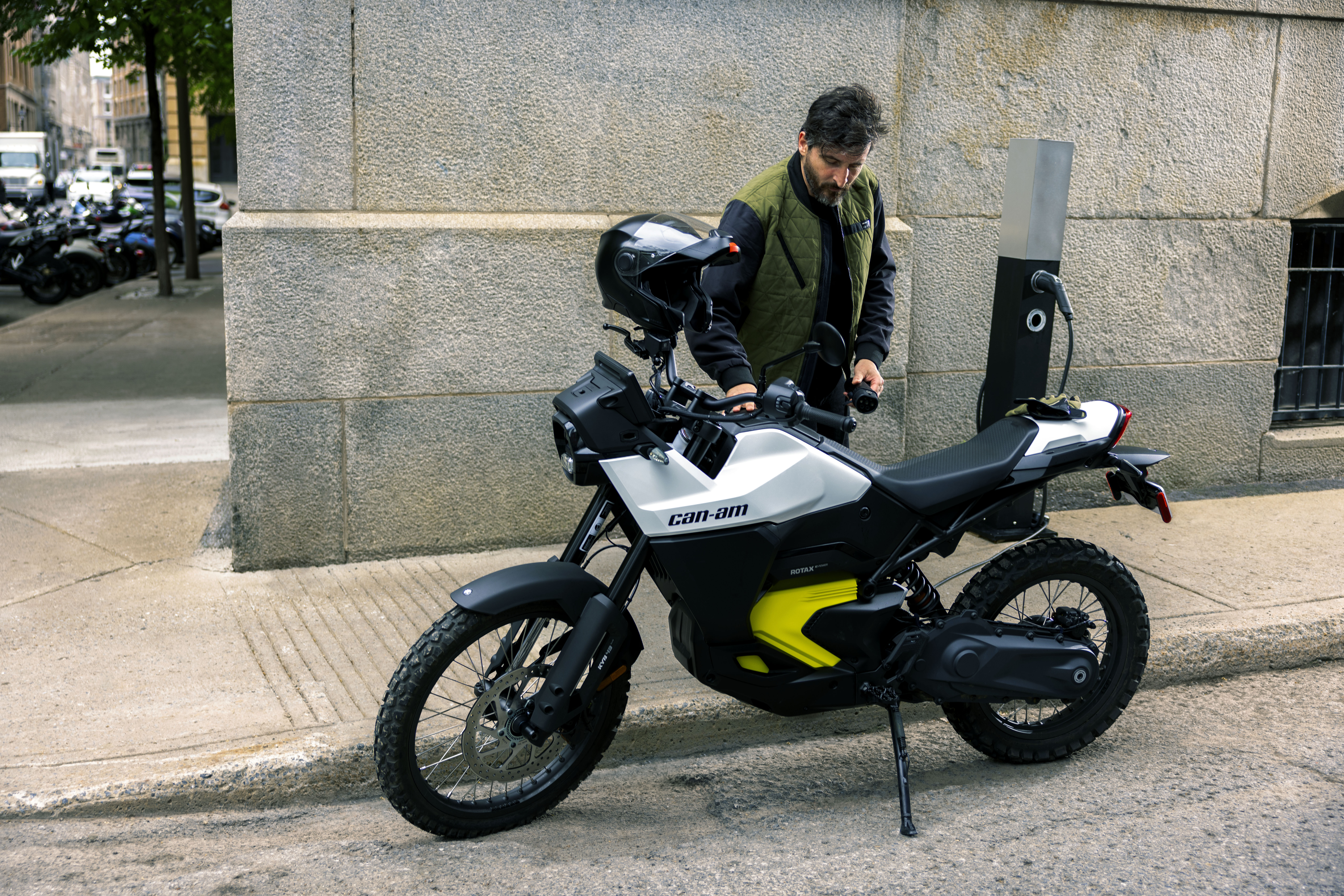
The Can-Am Pulse is a lot less intimidating to a newbie. Credit: Can-Am
Rotax is best known for producing engines for various manufacturers. Now that it has an electric powertrain that other manufacturers can purchase and integrate into their own bikes, it effectively lowers development costs and democratizes electric motorcycling.
The Can-Am Pulse is one of two two-wheeled EVs that the company debuted in 2025, and both mark a departure from the norm for the company, which is best known for making and selling three-wheeled transportation. The Pulse makes a sufficiently robust 47 peak hp (35 kW) and 53 ft-lb (72 Nm) of torque, with a curb weight of just 390 lbs (177 kg). Because the Pulse is electric, range is a concern, and Can-Am claims a range of 100 miles (160 km) in the city or 80 miles (129 km) on the highway, though how you ride will have a huge impact on what kind of range you see in the real world.
The Can-Am's rider aids aren't quite as robust as the Ducatis, but the Can-Am is significantly less powerful, so you're less likely to find yourself in need of them. That said, it still has anti-lock brakes, traction control, and user-selectable ride modes, so it's far from spartan.
The Pulse would make an excellent first bike thanks to its lower power output, low seat height, and light weight. It's a very confidence-inspiring ride, even if it is a bit pricey at $13,999.
The commute
On a good day with minimal traffic, you can typically get from one side of Los Angeles to the other in 30 to 40 minutes. Add in traffic, and that can easily grow to more than two hours. That's in a car. On a motorcycle, the time spent in traffic drops considerably. It's not impossible to hit that 30–40 minute figure on a bike with some smart lane splitting. That alone was enough to convince me to get my bike license back in 2017, but other benefits have presented themselves in the intervening years.
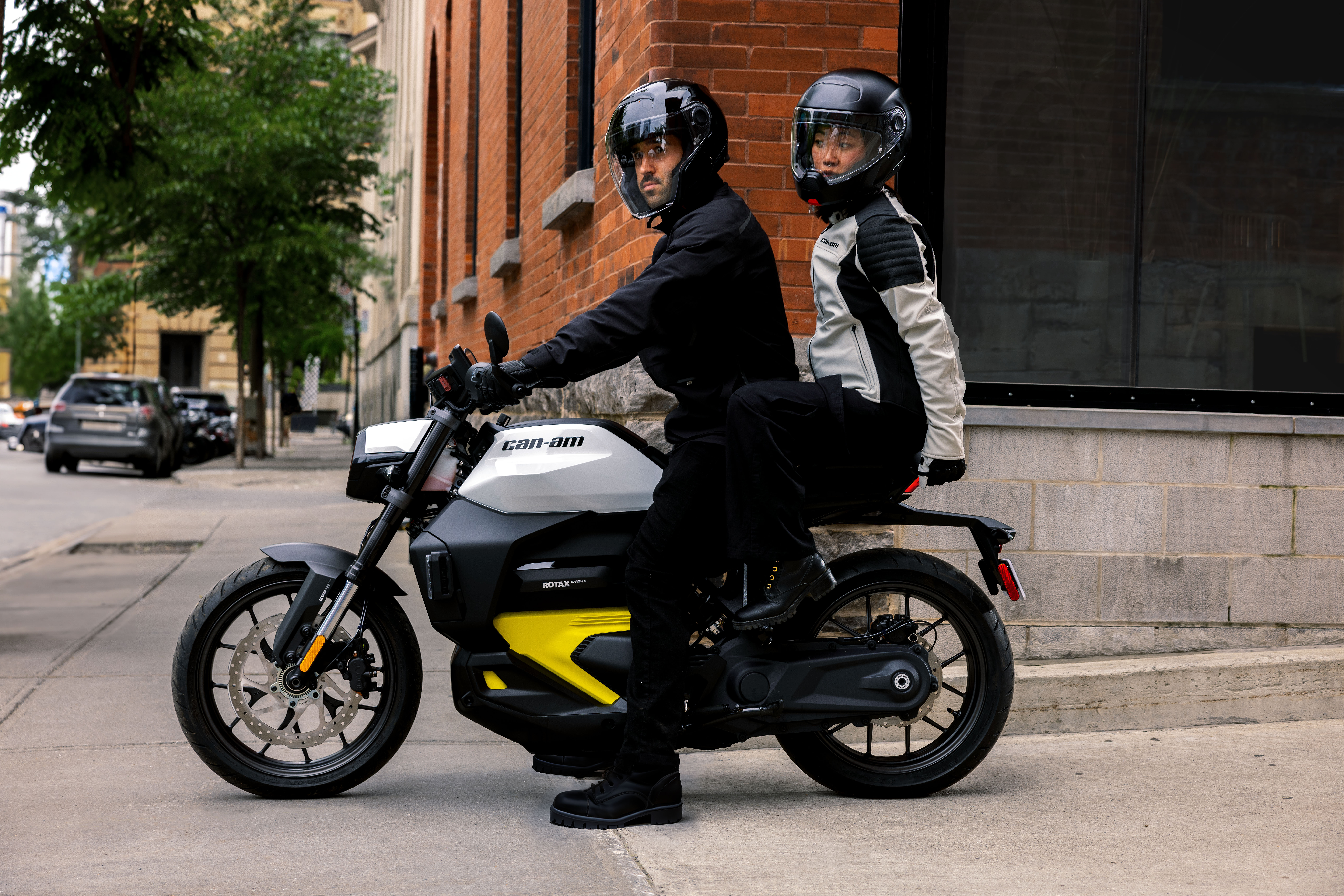
There's room for two. Credit: Can-Am
The cost of commuting on a motorcycle is typically much less than in a car. Motorcycles have small engines that are typically fairly economical when it comes to fuel. If you have an electric bike like the Pulse, the cost of recharging becomes effectively negligible due to its small battery pack.
Parking is also a benefit when it comes to motorcycling. You can park almost anywhere on the street, and some parking structures allow motorcycles to park for free (such as the terminal parking at LAX, for example). If you're doing a short trip and pack light or feel comfortable strapping a carry-on to your bike, this is an airport cheat code I've used for years.
Environmentally, having fewer cars on the road is a good thing, particularly when you consider that most people commute alone in otherwise empty cars or SUVs. Bikes put less wear and tear on roads, use less energy, and take up less space, making more room for everyone else.
The scary stuff
When you hear people talking about how dangerous motorcycles are or how doctors call motorcyclists "organ donors," it's easy to either completely psych yourself out of riding or go the other way entirely and think cautious messages are overinflating the risks.
Spoiler alert: They're not.
Motorcycling is dangerous, but as with anything else, you can do a lot to mitigate your risks and make riding much safer. The first and most important step is educating yourself. Taking a Motorcycle Safety Foundation course from a certified instructor is a great start. This will teach you the basics of motorcycle riding and help you establish good habits that will make you more aware on the road. These courses are also usually pretty inexpensive and will provide you with things like helmets and even a motorcycle to learn on.
Being alert, aware of your surroundings, and free from distractions is, hands down, the best way to avoid a crash. If you're paying attention to the world around you, you're less likely to be surprised by the person watching movies on their phone drifting into your lane.
Practicing with your motorcycle is also a great way to train your body to know what to do if you need to make an evasive maneuver. Riding around a parking lot isn't all that fun, but it's better than ending up in the hospital because you couldn't avoid a bad situation.
Gear up
Next is gear. There is a term in motorcycling called "ATGATT," which stands for All The Gear, All The Time. This means that you put on all of your safety equipment every time you ride, and this is a really good habit to get into. It has saved my life.
What exactly constitutes "All the gear?" To start, you need a full-face helmet, ideally with a Snell or ECE safety rating. It doesn't have to be expensive; there are plenty of great helmet companies out there making very safe lids in the sub-$250 range. Depending on where you live, a helmet may be legally required, but even if it's not, you need one.
A good CE-approved jacket is the next thing on your list. Leather is best, but a quality textile jacket will serve you well enough. Armor at the joints is nice, but slide resistance is the key here. Crashing a motorcycle, even at low speeds, can cause serious abrasion damage (aka road rash), and it's damage you don't want.
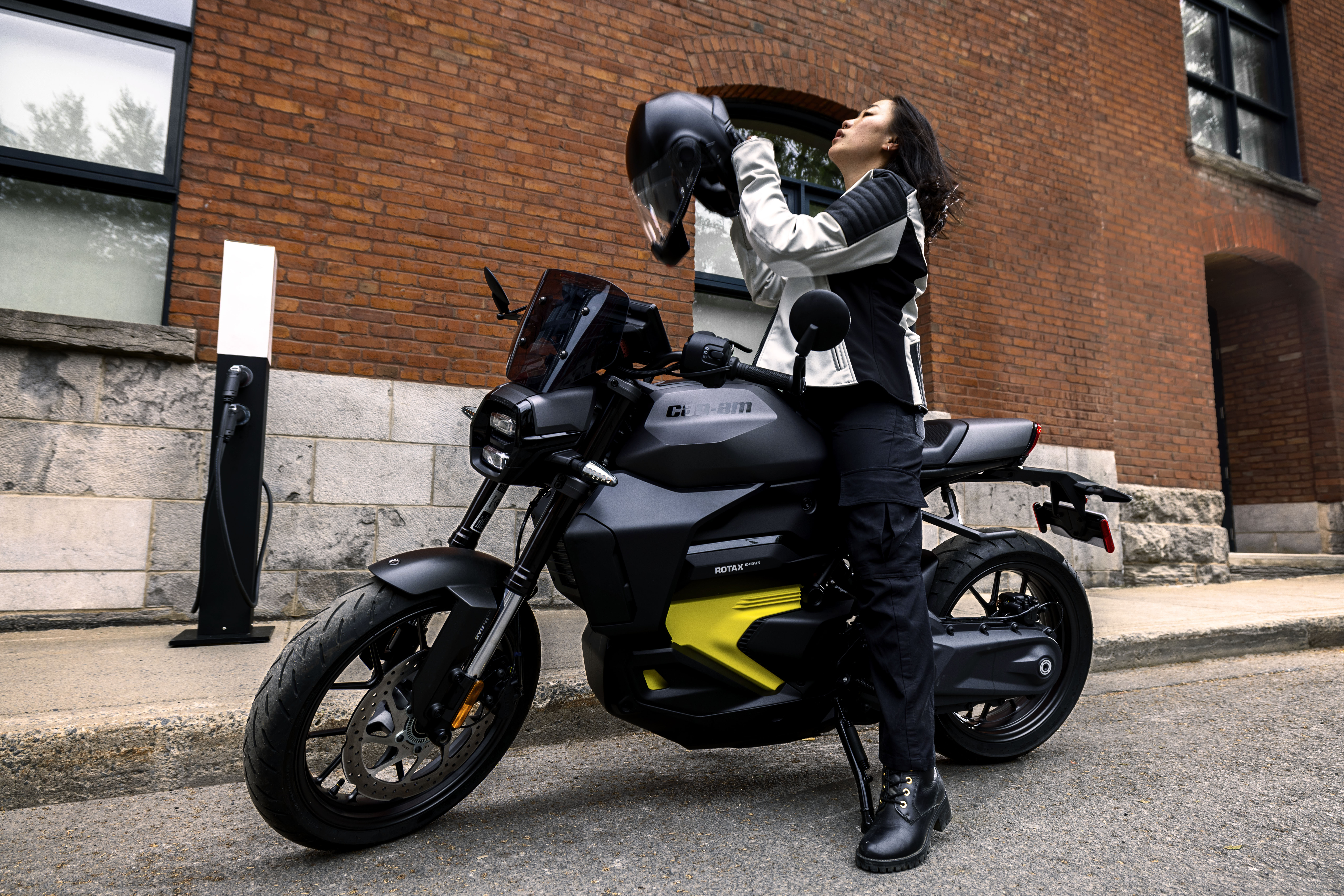
Always wear protective gear. Credit: Can-Am
Next, you need gloves. Real motorcycle gloves are important because they'll do a better job than simple leather work gloves of protecting against slides and impacts, thanks to armor at your finger joints and wrist. Again, these don't have to be expensive; there are many fine options under $100.
Pants are also critical. Regular denim, like the stuff you wear every day, has effectively no abrasion resistance, and during a crash, the pavement turns into a big, dirty belt sander. I've seen photos of people who have had slides in jeans, and it's not pretty. Motorcycle pants (even motorcycle jeans) will do a much better job of protecting you, and there are many options now that barely register as motorcycle gear, visually speaking.
Finally, boots. Work boots are OK, but dedicated, armored motorcycle footwear will protect your feet and ankles from all kinds of impacts and generally keep you safer.
To ride or not to ride
Ultimately, the decision to ride a motorcycle, especially to commute on one, is personal. Whether it makes sense for your life and whether the risk-to-benefit ratio is something you can live with is something every potential cyclist should weigh out. Still, I can say from a great deal of personal experience that once you start riding past all those drivers stuck in gridlock on the freeway, you'll be very glad you're on a motorcycle.






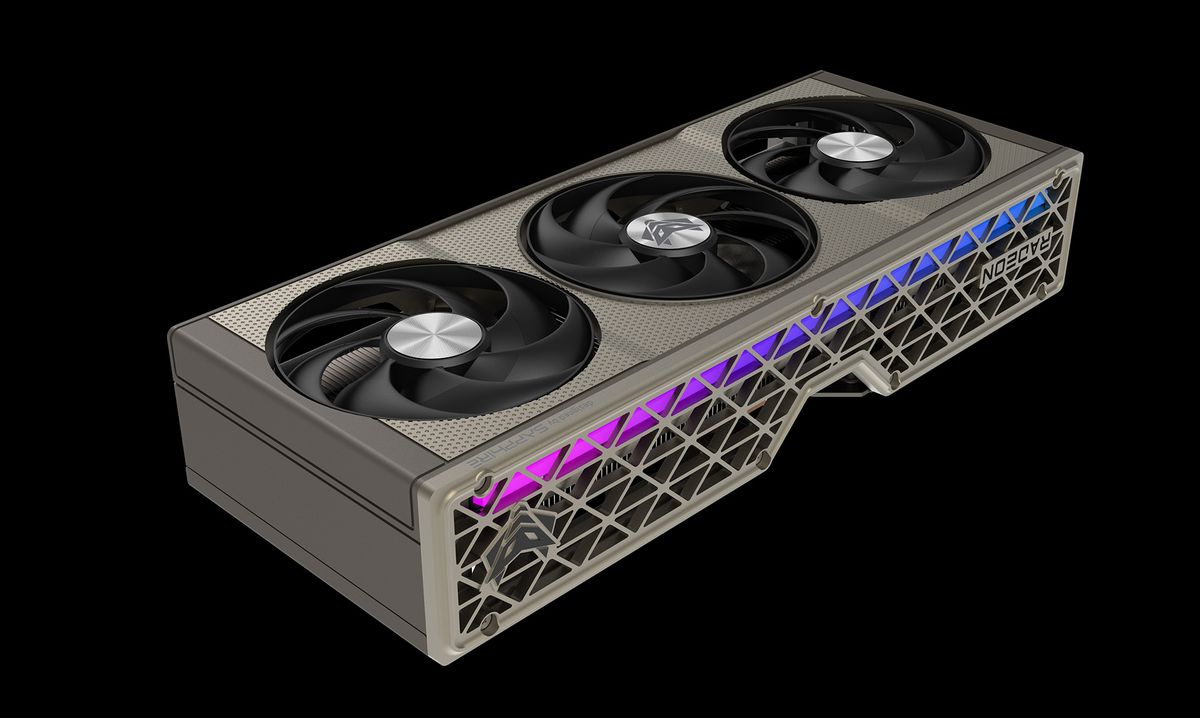

 English (US) ·
English (US) ·